
|
| Accept Cookies | Customize | Refuse Cookies |
Bm75 www.juzaphoto.com/p/Bm75  |
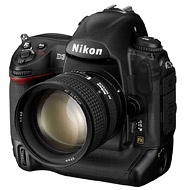 | Nikon D3 Pros: Solidity, autofocus, ergonomics Cons: Weight Opinion: I state that I don't use it for work, photography for me is just passion. It's perfect, no frills, solid, with a large and bright optical viewfinder. But it's also old in the whole project, it's a boulder, it has 12 mpx, it doesn't record video, the burst of shutter today makes you smile compared to recent cameras. What else can I say? Those who still have it keep it, now for what it costs on the second-hand market it is no longer convenient to give it away, it is an icon. Mine still has mechanics and autofocus p e r f e t t s, no hesitation, with any lens. It returns good and very light files; I honestly don't shoot in JPEG so I don't care if the file is ready; probably on this side it suffers from a certain antiquity of the in-camera processing algorithms, the recent Nikons are probably much better for those looking for jpeg. It's an amazing machine that comes at a ridiculously low price. sent on February 06, 2024 |
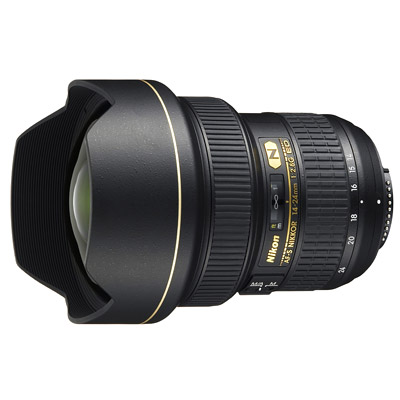 | Nikon AF-S 14-24mm f/2.8 G ED Pros: Optical quality in general, focal range up to 14 mm, construction and robustness with a single caveat regarding the front lens. Cons: Weight and dimensions, protruding and unprotected front lens, flare-type aberrations lurking. Opinion: It is a lens that I like very much and despite some flaws it will remain in my kit. To be a zoom the general optical quality is really high and in Nikon F-mount is also the only modern product that goes to 14 mm focal length, considering that there are fixed "exotic" natives that go to 14 mm but are dated optics and some of which are also difficult to find at fair prices in the used. It is an ultra wide angle, it distorts, it is its nature not a defect, and compared to others it distorts "better" in the sense that the "warping" effect it determines is less marked than in other lenses. It solves a lot even at full aperture and diaphragm is very very sharp throughout the frame. I really like the fact that with this lens you can give the images a very "immersive" look, which does not depend only on the wide-angle qualities but also on the peculiar character of this lens. It makes saturated /very saturated colors. As already mentioned by many others, the problems of this lens are two, both referring to the protruding front lens: the flare always lurking and the possibility of dirtying / ruining the lens even just by placing the lens in the bag - in my specimen the hood is rather loose and is easily removed, especially using aftermarket padded clutches that instead with every other lens protect against dust and scratches. Wanting to compare it with other Nikon material I would say that at 20 mm it is comparable with the AFS 20 1.8 that I had and I consider a really good lens, obviously the fixed wins for the f / 1.8, the weight and size, perhaps the minimum focusing distance, but overall the general yield is not very different. I didn't compare it to AFS 16-35 because I never had the latter. sent on August 07, 2022 |
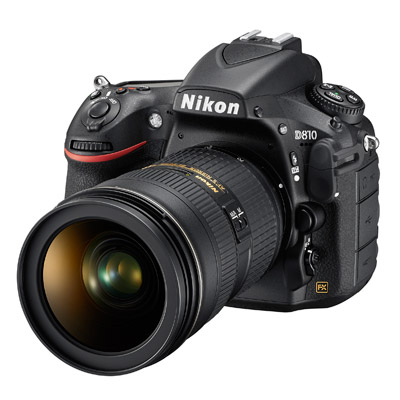 | Nikon D810 Pros: Image quality, usual high-end Nikon controls trim and ergonomics, autofocus Cons: no one in particular for my needs Opinion: I took it for landscape, having already had the d800 - then resold - and having other bodies with much less mpx. I found substantial continuity with the d800, with some improvements. Maybe compared to the d800 the improvements concern the exposure and the image processor, which makes jpegs in the room for me a little better. I use it mainly for landscaping but also as a second body for my son's cycling races, coupled with the 2.8 AFS lenses. Despite having an improved AF module , honestly with any lens the d3 is much more accurate, especially with long lenses; the d810 I use for panning with the 24-70 and the 14-24 (where I can, to avoid doing damage to cyclists). Excellent machine for those who already know the 800 series, for me the d800 was perhaps a little better in the recovery of shadows. Overall highly recommended, given the prices of the used and the quality of the files that will be current for a long time. sent on July 02, 2022 |
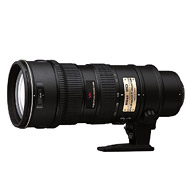 | Nikon AF-S 70-200mm f/2.8 G ED VR Pros: Construction, optical quality overall, interesting blurry, vr, 1.4x duplicable with great quality, fast and accurate af. Cons: vignetting (?) at the edges on some focal lengths very annoying, loses several millimeters of focal length in close focus; lens hood. Opinion: It is one of the optics that I use the most, for everything. It is definitely a lens with truly professional finishes, indestructible, very well finished and built; it is heavy enough to be a professional goal. It's good for everything from landscape to portrait to sports. The blurred is particular, to me it seems abrupt in the separation of the planes, but it has its own reason that makes it particular compared to the previous 80-200 2.8, especially compared to the bighiera that I had and that for me was beautiful but outdated in terms of autofocus. The only really sore note, the vignetting at the edges .... annoying, very intrusive and sometimes even difficult to correct: my specimen suffers a lot. Another "neo", in my experience: the hood; although it has the lock and an unlock button like the 24-70, honestly to me it fell more than on some occasions, ruining itself (with the 24-70 it never happened to me). It is a professional perspective and therefore it is very versatile, it is legitimate to expect a lot also as an AF performance, which does not disappoint me neither on d3 nor on d810. Among other things, it is fully compatible with CT , both with the 1.4x and with the 2.0x. For me it is a very good goal, with some small limits on which, however, we can work; if you do not need a "modern" AF performance the 80-200 bighiera in my opinion is a better compromise for those who do not want to spend a fortune on the new FL. It is located at much more affordable prices than the 70-200 VR II which still retains some limitations. Goal definitely recommended! sent on May 07, 2022 |
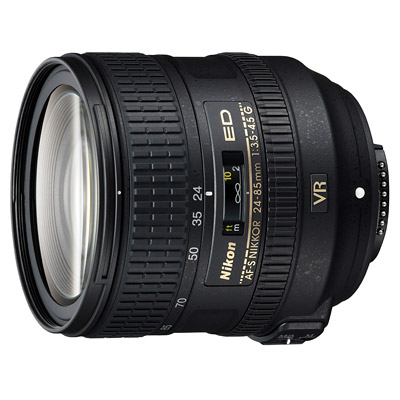 | Nikon AF-S 24-85mm f/3.5-4.5 G ED VR Pros: Compact and lightweight, sharp, VR, image quality, quality FF, autofocus. Cons: Nothing relevant to the price range. Opinion: Sober lens with very good performance, adds VR partially compensating for the variable aperture. I also have the 24-70 I series and I had the Tamron 24-70 I series, honestly in normal conditions in a blank test it is difficult to see the difference between the AFS with closed apertures. It adds to the 24-70 something more on the telephoto side that makes it useful in some situations, evidently the 24 is better at the extremes of the frame (if diaphragm), it is f / 2.8 , perhaps does not close the shadows like this, etc ... . But for general everyday use where lightness has its value or where VR is useful, the 24-85 is really effective and does not neglect image quality. Sometimes it seems to me that it enjoys a microcontrast a little higher than the 24-70 series I but I am not an expert in optics, I could not explain ... The filter diameter is 72 mm, so it is not possible to insert it in the classic triplet as a substitute for the 24-70, it serves adapter ring for filters or holders type V5 / V6 nisi. The autofocus is responsive, I use it with d3 and d810 for medium distance shots even for my son's cycling races and I'm satisfied. It does not replace the 24-70 in my kit. I'm honest: for the type of use I make of it I correct blissfully and without any problem in lightroom the defects such as distortion, vignetting, etc that the lens could have so I do not consider them proper; the fringing and ghosting I did not notice them. I would say excellent lens for what it costs, someone who does not need a 24-70 2.8 could do without the latter. The only flaw, the construction provides that by varying the focal length the lens extends to the outside with a double cam system that honestly does not make me crazy on any lens ... But it is not a problem given the very high overall quality that this lens offers. sent on May 01, 2022 |
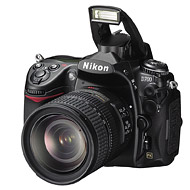 | Nikon D700 Pros: 12 mpx, solidity, ergonomics, general image rendering, ease of use, reliability. Cons: 12 mpx (can also be a con), white calibration in low light (defect shared with other models) Opinion: I then had it resold, then bought back... and exchanged. She is a lady machine but bears some signs of age. Let's say that wanting to stay on the 12 mpx today you find the d3 / d3s at prices so low that honestly having those - or deciding to buy them - keep a d700 makes sense only for weight issues (even if she does not weigh little is always more "light" than a d3 / 3s / 3x). Honestly today in my opinion it is a machine that is always useful and absolutely reliable, without frills and perfectly suitable for some specific uses, even professional. I exchanged it for a rather kilometerd d810 just to have a more modern body for the landscape, for the rest I keep the d3. Taken alone, the d700 are beautiful cars, compared with other, even contemporary, some limits shine through. For me the AF is sometimes uncertain (compared to the d3), ditto the exposure of the old 1005-point module calibrated on this model. Obviously the viewfinder and pentaprism of the d700 do not stand comparison with that of the d3, there is considerable difference. It will be the case of the specimens that I had but the front-back focus of the lens/body complex is more relevant than with the d3, talking about the same lenses; it may be that the d3 have more stringent construction standards with regard to the grafts. Having had - and resold - even the d800 I can say that the differences are not only in the mpx.. more modern machines in my opinion make raw files with more information and this is an aspect that for some uses can be decisive. 12 mpx are great for everything, only if you want / need to crop you need something more. But they are details... . Needless to talk about the performance at high Iso, obviously it does better than many DX but the technology is over 10 years old so... In summary it is a lady machine, without frills, pleasant to use for those who love the traditional manual skill of Nikon camera controls. sent on November 04, 2021 |
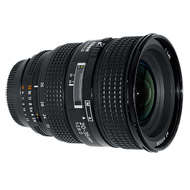 | Nikon 20-35mm f/2.8 D IF Pros: Sharpness, little distortion, compact, 77 mm diameter filters. Cons: Flare and backlight yield Opinion: I use it on the d700 and bought it to have a non-extreme wide-angle zoom that would mount filters. I'd say great lens, no frills. For me a great purchase. The only two points against concern the lampshed, which is an optional, HB8 code that original costs 20-30 euros but is difficult to find, but above all the yield with the sun in the frame is not at all satisfactory, purple halos are created impossible to postprodduct. sent on May 16, 2021 |
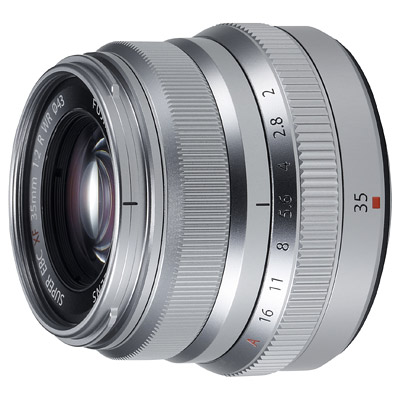 | Fujifilm XF 35mm f/2 R WR Pros: Compactness, solid construction, WR, good image quality, autofocus, diaphragm diaphragm diaphragm diaphragm with directions and right calibration. Cons: no one in particular. Opinion: It is a useful way forward; it doesn't clutter or weigh. It is very good in terms of image quality; as much as it may interest it is sharp and quite contrasted. Honestly, having even the 50 mm on FF , I do not think it is perfectly equivalent to a 50 1.8 because the 35 has something different that makes it special and maybe a classic 50 1.8 on full frame retains a bit of advantage in the blur, if we want to be fussy. The autofocus is very quiet; The MF is good though by-wire and the dial is very small. Very good diaframmi diaphragm diaphragm diaphragm, which does not move indefinitely as on 10-24 and has the correct indication of the opening value. I would say that overall it is a very balanced and well-corrected objective. I did not notice any particular difficulties or aberrations in the backlight. The price is commensurate with the quality also constructive. sent on September 29, 2019 |
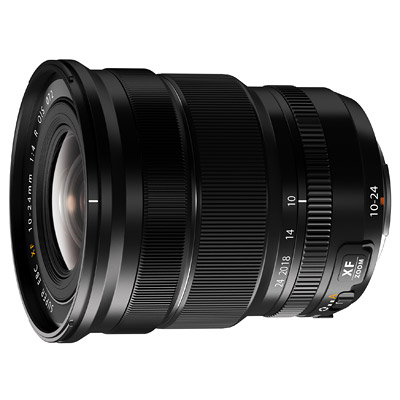 | Fujifilm XF 10-24mm f/4 R OIS Pros: Construction and lightness, focal length, distortion correction, stabilized, overall yield, accepts 72 mm filters. Cons: No WR, made to the edges so, controls and nuts (the diaphragm is a limit, sometimes you are with diaphragm in A because you accidentally hit the selector). Opinion: It is definitely a perfect optics to travel light and shoot in broad daylight or even with less light. It is sharp even at F4 but the yield to the edges decade especially with very close subjects; For landscape remains acceptable but probably Fuji felt the need to improve the yield and marketed the new 8-16 (much more expensive and heavy). Having also had the Sigma 10-20 F3, 5 used on DX Nikon I can say that that is more balanced but you can not complain even of Fuji, which maybe vignette less. It Does not replace the luminous fixed that Fuji has in the catalogue but in my opinion is a great purchase for those who want a good wide-angle/handyman to pair maybe to a telephoto zoom like the 55-200. Those who do not want to spend on the new 8-16 and want more quality will find only the 12 mm of other homes and Fuji fixed from the 14 that seem to be exceptional (but are fixed and do not offer field coverage of 10 mm). Wishing to compare to FF (as yield with good light can compare) The 20 f/1.8 Nikon or the 24-35 Sigma F/2 are definitely much more balanced. I Have to say however that as a geometric correction is very good, I do not know if it is software correction but also the raw I come out corrected in Lightroom. sent on April 10, 2019 |
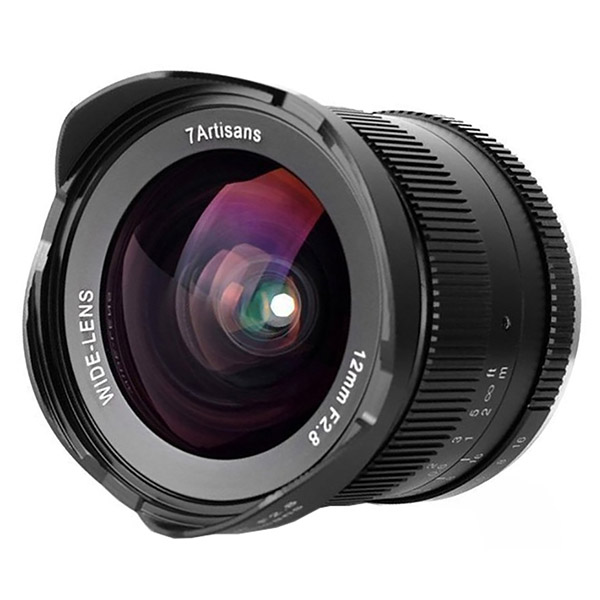 | 7artisans 12mm f/2.8 Pros: Price, compactness, general image rendering, well contained distortion, solid construction Cons: Flares, ghosts/all that exists in backlight, aperture Ring without shutter (for traditional photography), frontal bulb lens-no traditional screw filters. Opinion: Really remarkable Lens for the price range. Equivalent to an 18 mm on FF (I compared the angle of view with the Nikon AFS 20 1.8 that I own, mounted on the D800, and the 20 Nikon is narrower in a visible way). The distortion is very well controlled. Used on Fuji is a portento, especially indoors or in all situations where the sun is not in the frame. To avoid the use in backlight because it does not stand the direct sun and projects a little ' everywhere halos, phantom images, flares and all the repertoire of aberrations that there may be (but who knows, maybe someone will also find a creative use without jokes). Moreover, the situation gets worse if we get out because the aberrations become even more visible. The image decays at the extreme edges and there is a fair amount of vignetting, but for my uses the whole thing is more than acceptable. Good color yield, used on XT1 not known particular deviances to be corrected in pp. It is clear already at full aperture, for those who ask, it solves abundantly all 16 mpx of the aforementioned XT1; I haven't tested it on the 24/26 mpx of newer machines. In Fuji, same focal and as fixed lens, the alternatives are not many, I think only the Samyang 12 mm and the Zeiss 12 mm (but it is also autofocus). For me it's all about price.... Who wants to spend really little and have a decent lens must run to buy it. If you are looking for absolute quality, you may find the most suitable Zeiss offer, especially if you are shooting against the light. sent on March 27, 2019 |
 | 7artisans 12mm f/2.8 Pros: Price, compactness, general image rendering, well contained distortion, solid construction Cons: Flares, ghosts/all that exists in backlight, aperture Ring without shutter (for traditional photography), frontal bulb lens-no traditional screw filters. Opinion: Really remarkable Lens for the price range. Equivalent to an 18 mm on FF (I compared the angle of view with the Nikon AFS 20 1.8 that I own, mounted on the D800, and the 20 Nikon is more narrowely visible). The distortion is very well controlled. Used on Fuji is a portento, especially indoors or in all situations where the sun is not in the frame. To avoid the use in backlight because it does not stand the direct sun and projects a little ' everywhere halos, phantom images, flares and all the repertoire of aberrations that there may be (but who knows, maybe someone will also find a creative use without jokes). The image decays at the extreme edges and there is a fair amount of vignetting, but for my uses the whole thing is more than acceptable. Good color Yield, used on XT1 In Fuji, same focal and as fixed lens, the alternatives are not many, I think only the Samyang 12 mm and the Zeiss 12 mm (which however is also autofocus). For me it's all about price.... Who wants to spend really little and have a decent lens must run to buy it. sent on March 27, 2019 |
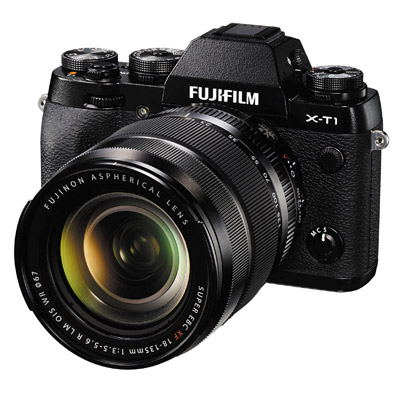 | Fujifilm X-T1 Pros: Retro style of controls combined with many useful modern functions (electronic shutter completely silent, focus peaking and electronic viewfinder with dual frame for MF Precisissima); Exceptional electronic viewfinder, extremely low weight, quality of the produced files, perfect white balance in artificial light, focus and AF. Cons: Flash system. Battery life. Opinion: I took it as a second system, from alternating to Nikon full frame. What to say, it's a marvel. The files that you get are always very close to what you want to achieve by shooting in natural light and are well workable in the recovery of lights and shadows. The raw are always very good already departing and wishing you can always apply with Lightroom in post production the assembly color of Fuji, type Astia or Velvia. On the Iso seal side I can not express myself objectively, in the sense that I should compare it to other APSC that I no longer after switching to FF: For me the yield is good, comparable to D7100, maybe better. But I read a little everywhere that the Iso indicated by Fuji in the car actually... are not real so any cross brand comparison is out of my reach and my purposes. The native optics are all of quality and I sincerely admire Fuji for having given the APSC format the dignity that other brands have denied when they stopped investing in the creation of valuable optics. The XT1 is a very powerful machine that in the simplicity of transport of a system composed even by a few essential lenses allows to shoot with satisfaction reaching a remarkable image quality. The manual ring nuts must please: it is more a question of style than speed because on balance the controls of the Nikon type d700/d8 * * are faster (at least for me I'm used to that layout of controls). For me the strong point is the viewfinder (as big as the D800 with DK17M mounted) and aid to manual focus: I rediscovered the pleasure of shooting with vintage optics with the certainty of a perfect focus. sent on February 08, 2019 |
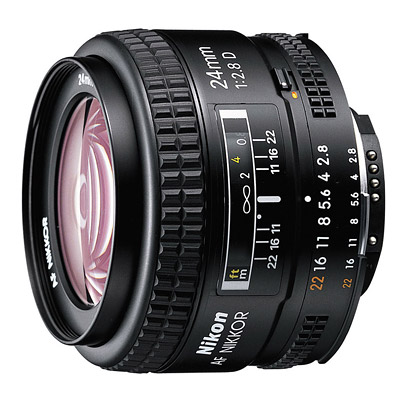 | Nikon AF 24mm f/2.8 D Pros: compactness, colour rendering, autofocus Cons: In my opinion little performance on sensors from 36 mpx up Opinion: I had taken it as equivalent 35 with DX and in the transition to FX and D800 I decided to resell it. It's not that the surrender was horrible: simply the resolve to the edges on FX has never convinced me, as well as the distortion in general. I replaced it with the 20 AFS, which, despite the differences of the case, is a completely different point. I have nothing to say for the rest: very nice colors, rapid autofocus. I think on FX machines with 24 mpx at most can still say its. I would have kept it willingly but it made no sense in my outfit, especially once I purchased the Sigma 24-35 too. I didn't regret selling it. sent on December 29, 2018 |
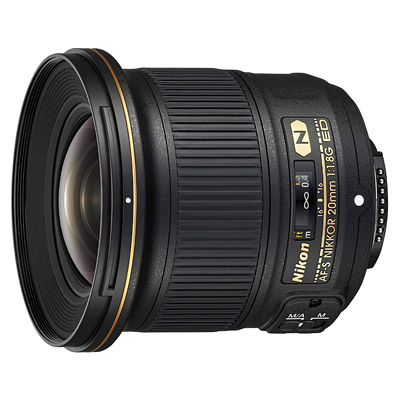 | Nikon AF-S 20mm f/1.8 G ED Pros: General yield, maximum aperture at f/1.8, lightness, sharpness, colour rendition, distortion contained, no phantom effects and flare in backlight. Cons: No one is detecting, perhaps the size (measures twice the other 20 mm). Opinion: Optics not inevitable in a full format kit. Before Sigma launched the 20 1.4 Art this lens was unbeatable. Excellent on all fronts, very wide maximum aperture (the previous Nikon was f/2.8), general rendering of the images very nice; Known in the development of raw color nuances very subtle that other lenses can not capture. Wanting to churn out well-contraated images already at full aperture with a remarkable definition of details. It communicates with the autofocus of the machine in an egregious way, I have never had a problem of focusing, even with low light. The distortion is almost absent for a 20 mm, certainly is very well corrected compared to the previous lenses. About the size I hear it's compact.... My opinion is that you can say that it is light but compact I would not say: it is long (and wide) almost twice as much as a 20 AfD (although it must be borne in mind that the 1.8 lenses are necessarily wider than those of a 2.8 lens). I use it when the Sigma 24-35 art is not wide enough or when I want to go out only with fixed: it really is a pleasure to use. For me the vote is 10 and praise, no regrets in the purchase and so much quality of the images. sent on December 28, 2018 |
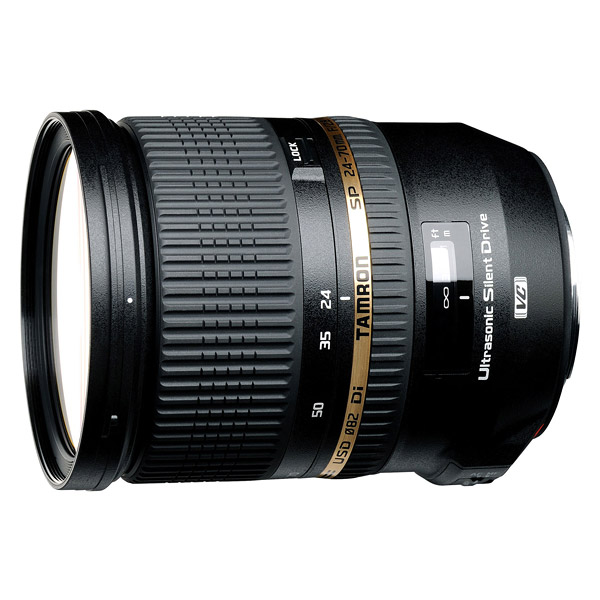 | Tamron 24-70mm f/2.8 Di VC USD Pros: Construction, stabilization, overall performance Cons: None, the tele side is slightly poor, filters 82 mm. Opinion: Honest lens from the price contained in the used, offers so much yield at a price that is half the original Nikon 24-70 G. also offers stabilization. I can't complain about anything. With regard to surrender, compared to the Nkon d800 I realize that the tele side is qualitatively less performanant than the wide side. In essence it does well what you expect, without smeing. At 24 mm The distortion is visible but not excessive (the Nikon AFS 20 1.8 Despite being wider has less distortion-but it is a fixed, I know...). It offers saturated colors, maybe it is slightly warm in yield, I find the Greens a yellow thread and I find myself often change on LR the green slide when I click with this lens. My lens has no front/back focus problems, the AF is always very accurate fast enough for generic use. From 24 to 35 mm, comparing the yield with the Sigma 24-35 f\\2 Art which I also own, the Sigma is better in all, except for the distortion, visible on both at 24 mm. On the Nikon D800 F/11 is already excessive, at 100% there is a loss of sharpness in the finer details due to diffraction. I have not so far detected any particular problems of flare or ghosts with strong lights in the frame. Like all 24-70 f/2.8 It has on its side the versatility in the generic use, embellished in its case by the presence of the stabilization. It works well with Nikon flashes (used with sb700 and sb900) and therefore communicates smoothly with the Nikon CLS. It is a safe purchase with the only unknown common to all independent manufacturers: Future compatibility with Nikon\\canon camera bodies to come. In conclusion: I am very satisfied with the purchase and use that I make. I've never had the original Nikon 24-70 in any of its variants so I can't make comparisons but I don't feel the need to change the Tamron. When I need something more I know that I have to use a fixed. Recommended. sent on December 27, 2018 |
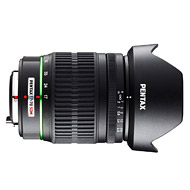 | Pentax SMC DA 17-70mm f/4.0 AL (IF) SDM Pros: Sharpness, utility of the focal excursion, maximum constant aperture, color rendering Cons: Chromatic aberrations at 17mm and TA (improves little diaphragming), on K5 autofocus uncertainty. Opinion: I got it with the K5. I regret it in some ways because I used it as a handyman, has served me very well and has never suffered the full problems of breaking SDM engine. Hard to find something of equal quality with Nikon. Very helpful, today you can choose between this and the original Pentax 16-85 which however is not fixed at maximum aperture. The colors, associated with the excellent sensor of the K5, are very beautiful and the yield of the detail also very refined. Having to find the fur in the egg the construction is not entirely convincing because of the double cam structure so when it is all extended the front lens has a lot of play and the thing is a bit scary. In mine had entered some small particles of dust for which tropicalization is not entirely reliable (that there is, although not officially stated, is a fact, given the presence of a gasket on the lens graft). A word about autofocus: coupled with the K5 is enough but my experience is that the lens is a bit uncertain in acquiring the precise focus. I mean, even on a tripod if you focus in AF on the exact same point between the two captures there is difference. But it is probably a problem of torque-camera body and AF algorithms (very old in the case of the K5). If I hadn't changed brands even going to FF I would have definitely kept it as the K5. Very often (all) Pentax products are considered to be second-order but wrongly, because their optical quality is exceptional. This lens could be the "unique lens" for someone who wants to travel light (and as Pentax APSC halves are comparable to mirrorless) maybe completing the outfit with someone of the excellent original Pentax Type 15 limited or 100 macro on the Tele side. sent on November 02, 2018 |
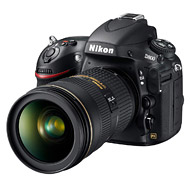 | Nikon D800 Pros: Construction, sturdiness, quality of the produced files, high ISO resistance. Resolution (Depends if we care about that too). Cons: A certain slowness general operation, menu ' a bench common to all models "pro", lack of an IR receiver integrated in the machine for remote release, battery life. Opinion: Great machine, capitalized. Beyond all the files it returns contain really a great amount of information. It makes the best of itself only with very high performance optics. A huge step from the APSC that needs a learning period to understand and use it to the fullest. I am not detecting problems of micromotion because if we want to exploit all the resolution the only solution is to put it on the tripod with MUP and delay, otherwise from 36 mpx you have to expect a decay of the image seen at 100% due to use freehand to Less than to use it with faster times than those usually considered "safety". The construction is outstanding. I do not understand the lack of an IR receiver for an external remote like the ML3: wanting to use external triggers you are forced to use the flash sled and the 10-pin cable (also for the original Nikon wireless control which, among other things, costs a kidney). The files are exceptional and take up a lot of space (do not use reduced formats, shooting in raw or RAW + JPEG): The memory cards end soon. High Iso seal very good (if we consider the MPX). It puzzles me the battery life, lower than I did with APSC D300 and d7100. In the matrix exhibition known that compared to what the machine proposes there is always about a stop and a half of space on the highlights, the machine seems to be set conservatively. The autofocus works fine; My specimen does not present the problem that some complain about, related to a supposed difference in the focus between AF points to the right and points to the left. For my needs, my finances (socket used now has a/prezzo quality ratio unthinkable for any other product) and uses (landscape) is the ultimate machine, I do not need anything else in a camera; In time I'll update only the optics. Place that with the machine that you own there you do anything (arranging yourself with what you have), thinking from Dad with children, I would say that it is not the machine that we need for general use if we think to use it to make very often photos to our children who play at Calc I/basket/volleyball/other sport. For this is much better a apsc with less megapixels, less weight and a lot more operating speed. sent on June 15, 2018 |
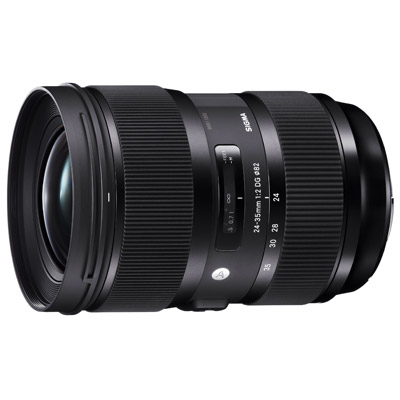 | Sigma 24-35mm f/2.0 DG HSM Art Pros: F/2, sharpness, color rendering, construction, accepts filters (82 mm) Cons: The gasket is missing on the graft to prevent dust/moisture. 24 mm visible distortion. Vignetting at f/2. Opinion: Good lens. Better to consider it as a fixed 28 which if necessary opens to 24mm or closes at 35 mm because if you take it thinking about 24-70 obviously you will be disappointed by the limited focal length excursion. Sharp lens on the whole frame; It is a blade at almost all openings, it gives the best under f/8. It is like having in the bag 24mm 28 mm 35 mm all f/2; It does not replace a wide-angle pushed from 20 mm down (use alternatively the 20 Nikon 1.8 which is still less sharp at the edges, at least my specimen). Anyone accustomed to the 16-35 or similar will obviously lose a lot of coverage on the wide-angle side, but will gain F/2 on all focal lengths. Very full chromatic rendering, at all openings, similar to the performance Nikkor with treatment N. Only flaw distorts a bit at 24 mm but nothing that can not be fixed in PP (LR7 incorporates the correction profile). Excellent value for money for a lens that can be updated as well as calibrated at will via additional USB dock. I would say rated 10 according to my tastes, my needs and my finances (lacks the praise only for the distortion to 24mm). Update: Vignetting at f/2 is present but I find the correction profile in LR7 too aggressive. sent on May 18, 2018 |
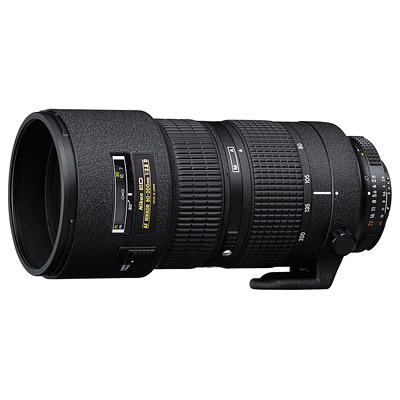 | Nikon AF 80-200 f/2.8 ED D Pros: Sharpness, mechanical construction, IF and internal zoom, optical scheme, AF focusing precision, collar with tripod mount, almost everything. Cons: Weight (if you can make a counter), lack of tropicalization on the graft, some uncertainty of the switch M / A that sometimes does not hook completely in A. Opinion: I purchased it on DX for use on the D7100 and I compared it with the Sigma 70-200 that I already had. On 24 mpx the difference is seen both in the color rendering and in the quality at full aperture. Going up with the mpx on FF (D800) the differences are not so obvious because even the 80-200 shows some limitations but overall remains a decent and well built, with a quality of image I would say even today of the highest level if used well. My specimen does not suffer from particular aberrations or flare in backlight. It is a good lens. The weight is felt but it has been built like that and it is almost a pity to have to write it down among the defects. The only neo - shared with (almost) all the objectives of the time - is the lack of a tropicalization on the graft objective (perhaps missing altogether) also considered that it is a declaredly "professional" lens to its release on the market. It can be used without problems at f / 2.8 and does not suffer from focus breathing with increasing focal length and minimum focusing distances. Even the distortion it generates is minimal. The blur is beautiful. The lack of VR is not a defect, since it was not designed with that function (and perhaps it is better to prefer this lens to the 70-200 VR 1 which according to many had a really annoying VR). The best (and better than the next AFS80-200) for those looking for a lot of quality at a small price in addition to FF compatibility as it is used at about 500 euros in excellent condition. You will not regret the VR. rn sent on February 27, 2018 |
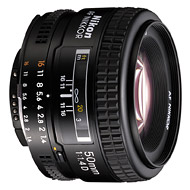 | Nikon AF 50mm f/1.4 D Pros: f1,4, dimensions, price, strength, clarity with intermediate diaphragms, color rendering and rendering of shadows. Cons: none relevant. Opinion: I bought it and used it as a portrait opener for DX (D7100). in this capacity it is excellent and holds 24 mpx well. Used on the d800 loses some of his poetry but maybe it's my problem that I do not adapt to the focal length 50 mm. I still have to test it well on FX to understand its usefulness well: it would be the complement of a minimal set of 3 lenses (20 1.8 - 50 1.4 - 100 macros) but in reality I see no particular merits nor defects for which it risks becoming (for me) a really unused lens. I do not find big flaws, it is obvious that a lens f / 1.4, however, dated is soft to 1.4 with some visible aberration. just load the correction profile on lightroom (LR 7 has it incorporated) and solve the problem, Intermittal diaphragms is a blade, I would say that from f2.8 is very clear up to f8 (on DX). I have to verify it well but probably with d800 already f / 8 the diffraction could take away sharpness. It has a major advantage over AFS optics: it is small and is never a problemtake it with you. Attention, however, that at close distances with 36mpx the lens, even at 1.4 makes a lot of detail (with a shot like a portrait just looking at the pores and the imperfections of the skin are seen in a surgical way). Overall I would say excellent lens that will like on FX to all those who at the time of the film did a bit 'of everything with 50mm and DX who wants a portrait lens and short traditional canvases. The color rendering is very good, more neutral than the AFS (To understand the 35 1.8 DX is more saturated with the same picture control). Last positive note; today it is used in very good conditions at less than half the price of an AFS 1.4 which, however, does not excel in quality enough to justify the price difference with the AFS 1.8. sent on February 26, 2018 |
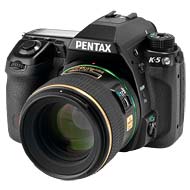 | Pentax K-5 Pros: Iso 80 native, image quality, Iso seal, built-in stabilizer in the machine, tropicalization, backward compatibility with ALL Pentax optics, K mount, fully magnesium construction, 100% pentaprism viewfinder, key layout, user interface, key customization Cons: Autofocus a little below the competition (at the time) when compared to the Nikon / Canon machines of the same level (eg: d300, 7d) performance and construction. Opinion: Really amazing machine that now you buy used for less than 150 euros. What to say? EXCELLENT for everything with 16 mpx that are enough for anything to an advanced lover. I loved it and sold it only for passage to Nikon for the sake of reselling the whole system (although I kept some optics with the idea one day to buy the big sister FF K1). It has a very high image quality and a high enough ISo performance (it is still APSC) with a dynamic range worthy of much more expensive, emblazoned and larger format machines (we are talking about more than 14 stops measured by Dxomark). Do not waste raw anemic (as it happens with Nikon) and the jpeg customization in the room is very extensive and allows fine adjustments to obtain jpegs already usable. It 'an extremely compact machine, which allows you to carry it without much effort and coupled with a lens of our taste (I used the 17-70 f / 4 as a handyman) turns into a perfect machine for any use dispassionate during a walk ora photographic output. It should be noted that the Pentax APSC range of lenses is very broad, with fixtures ranging from 14 mm to 300 and many even professionally known zoom lenses. It is not a machine for those who take sports photos (the performance of AF is not exciting in this area, especially for those who are used to Nikon / Canon machines type d300 / d7100 or 7d) but for everything that is stationary or moves little autofocus is more than enough. The colors of the Pentax system are different from those of Nikon and Canon, although with Lightroom / Photoshop / the software you prefer we can do whatever we want. Needless to say, it accepts any optical MF produced in the last 40/50 years including some rare gems (including optics attack m42 with adapter) that are just a few euros even on the electronic market and that as a result of the SR (stabilization of sensor in the machine) also become stabilized optics, while remaining in manual focus. rnOnce the optional accessory OME 53 (15 euoriginal ro) that allows you to expand the viewfinder view, so as to make it more readable if we often use manual optics (it is still the viewfinder of an APSC ...). rnA little gem: the 80 ISO NATIVE (it is not an extension, they are real and are the minimum ISO selectable in the car - see the Dxomark tests.The only car that I think was pushed to a lot was perhaps the Nikon d810 (now the d850 ) ... I sold it and in the end I regretted it ... rn sent on January 12, 2018 |
 | Pentax M SMC 20mm f/4 Pros: mechanical construction, minimum weight and size, clarity, flare resistance, low distortion on the right Cons: nobody Opinion: Used only on the right is my favorite optics on K5. superb optical rendering with full colors and well-managed contrasts. It is very very clear. Despite the age does not suffer on apsc of any particular aberration. Just closing the diaphragm is clear from one meter to infinity on apsc thanks to the hyperfocal due to the focal length. this is a nice advantage of apsc because we have the hyperfocal of a 20 mm Ff with the focal equivalent of a 30. Being a lens that is the excellent condition at about 100 euros I would say that is a great purchase and thanks to the ring of the diafrmmi present also allows a mirrorless use also FF. sent on December 21, 2017 |
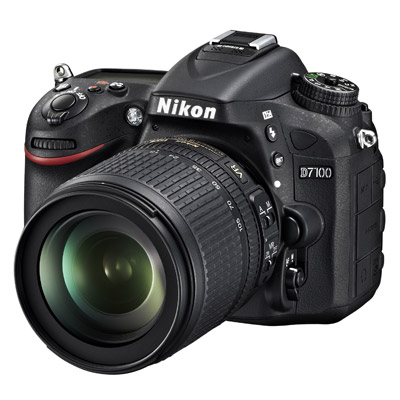 | Nikon D7100 Pros: AF system, pentaprism and VF with 100% coverage, files with good dynamic range, low weight. 1.3 additional crop. Wireless management of external flashes Cons: Buffer, Ergonomics compared to the 300 and 500 series, generally reactivity of the machine. Body partially in magnesium. Opinion: Excellent APSC machine. She does not lack anything and with good optics she returns very detailed files. Compared to the D300 that I had and (much) appreciated I do not convince ergonomics and layout of the keys, but so ... because for the professional layout you need to go on the d500 with more than triple spending. Moreover, it shares the ergonomics with the 600 Fx series, very good the Iso car as well as the Dlighting with which you can get jpegs already usable. Developing the raws you realize that the files are very soft and well workable in PP. The autofocus of mine is perfect and I have to say that, as per technical specifications, it also fits well with AFD lenses. The machine works very well with Nikon flashes, even in wireless mode: I would say that Nikon's CLS excellence is truly a guarantee. With my some Sigma lenses do not focus in liveview .. I do not know if it's a problem of my lenses or my d7100. There is noise but it is not excessive and manageable. With a machine of this kind and quality optics% 26agrave; any prosumer user could be satisfied, even if it is a pity that Nikon leaves to third-party manufacturers the offer of brighter DX zoom lenses of f / 2.8; Given the compatibility problems with the liveview, the purchase of 1.8 sigma zoom is a hazard (if for the type of use we make of the machine the LV is essential). The only really important downside concerns the construction that compared to the D300 is a step backwards. I believe that the grafting objectives would deserve to be screwed onto the magnesium body to ensure better sealing with weight optics. sent on December 17, 2017 |
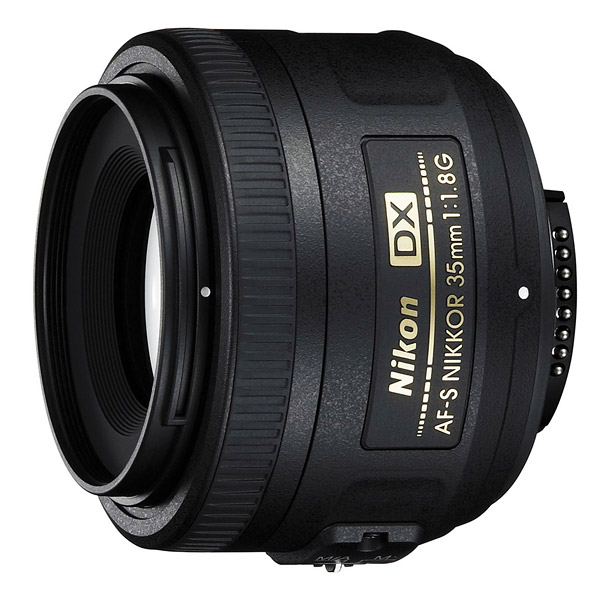 | Nikon AF-S DX 35mm f/1.8 G Pros: Nitrous, f 1.8, contrasting the right and engraved. Cost. AF silent. Cons: Some aberration to TA, distortion. Opinion: Great standard lens on DX with minimal cost and great yield. I only sold it for not being used (I do not like the 50mm equivalent and I used it a bit) exchanging it for an older 24 2.8 af d to use as a 35mm on the D7100 as a "walking" lens. It is very sharp and the yield is that of the non-nanized G series. It is highly recommended if it likes the equivalent focal length (almost) to 50. It is very small and is relatively small in size. rn sent on November 03, 2017 |
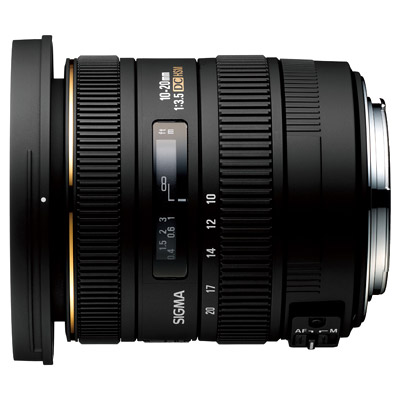 | Sigma 10-20mm f/3.5 EX DC HSM Pros: Construction, precise AF, reduced distortion, very small chromatic aberrations, focal length, color rendering. Cons: TA 10 mm vignette, 82 mm filters. Opinion: Great goal for my tastes, my needs and my finances. Thank you who advised me. Used on the Nikon d300 and D7100 I do not seem to suffer as the megapixels increase, though with d300 to 12 mpx it was a blade. My copy does not suffer from front / back focus or special distortions / aberrations. Although not tropicalized I used it in non-ideal conditions with strong water vaporization and had no problem. To get a good balance from center to edge just diaphragm af / 8, but already at full opening the yield is good. A 10 mm wide vignette opening somewhat but nothing that can not be corrected in PP. I have so far had no problems with flare and the like, which suggests that the anti-reflection treatment of the optic is good. I was astonished by the distortion, which is exceptionally well corrected even at 10 mm and, despite being present, corrects very simply in PP, at the pact to shoot snap. For my desires 10mm on apsc are very useful, actually in this optic I was looking for oneSurrogate Canon 20-35 I had on FF at film time and I think I found it, gaining some degree of field angle on shorter focal lengths. Finally on d7100 with the possibility of additional 1.3 x crop in practice it's like having a 20-40 equivalent. To sum up, I would say that this is an honest and consistent lens sold at a reasonable price and lower than the original nikon 10-24 or 12-24. sent on August 17, 2017 |
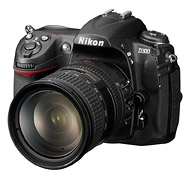 | Nikon D300 Pros: It was a Pro and you still see it today Cons: Annoia -forse also bored in 2007-the limitation of 14-bit burst, really limited for a commercially-used machine. Opinion: A review of this car, executed in 2017, can only take into account that it is a car with almost 10 years of honored service. What really surprised is its performance and physical activity. Nikon has not changed much of the physical settings of the professional camera range and this makes it still current. Moreover: the autofocus module still today is great and superior to that of recent non-pro-semi headband models or other brands. I would say that it is a rocky car that is still outstanding for quality and usability, especially for those who want to get the most out of raw and missed the jpegs created by the car. Defects must be evaluated in the light of age: it is useless to complain about the absence of video function in a model that was designed without that purpose: who today buys, uses, knows what he wants and does not have to complain about. I'm going for dynamic range and high Iso hold: anyone who wants more should acQuist the new (and maybe change format). Coupled with fixed lights and avoiding too wide-angle wings (ie: avoiding using 10mm focal lengths by finishing very fine details at a very wide field angle), its resolution is still dignified for all uses and allows you to shoot without thinking getting prints well You define. Only bracketing is prone to set the first time, then you do everything with Fn and the two ringers, very straight. Having to complain about my own, I often find myself computing +0.7 (at least) the exposure values ??suggested by the machine, in the matrix. However, there is also a manual setting that allows to vary the behavior of the exposure meter machine. Incredible .... sent on April 30, 2017 |
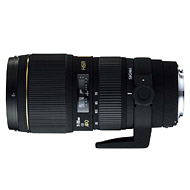 | Sigma APO 70-200mm f/2.8 EX DG HSM Pros: 2.8 aperture, zoom and internal mf, very solid construction, fluid ferrules, good excursion of mf ring, sharpness, color tone, it is FF, speed and accuracy AF good. Cons: unserviceable at minimum focus distance and 2.8 ingombroe weight (which is also considered 2.8 remains a beast), unusable with direct sun in the frame, even diaphragmed. Opinion: Used only on the right coupled with Nikon d300. It 'a good deal because it has a good cost-performance ratio. My copy has the defects that I describe above, I do not know if it's common problems. Unlike what I read in other reviews mine has no problem back focus. Its advantage is the price: it costs as a Nikon 80-200 first original series but is more modern and HSM. sent on April 01, 2017 |
 JuzaPhoto contains affiliate links from Amazon and Ebay and JuzaPhoto earn a commission in case of purchase through affiliate links.
JuzaPhoto contains affiliate links from Amazon and Ebay and JuzaPhoto earn a commission in case of purchase through affiliate links.May Beauty Be Everywhere Around Me